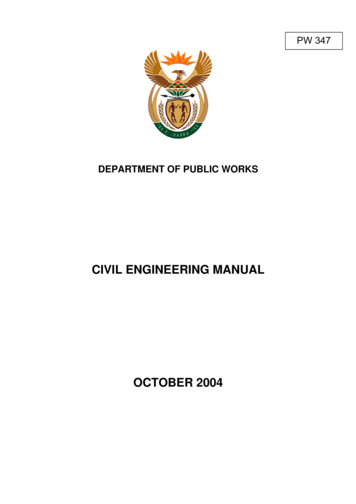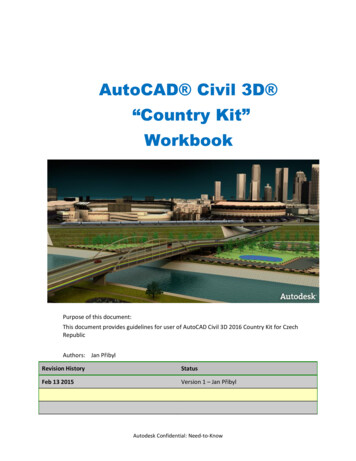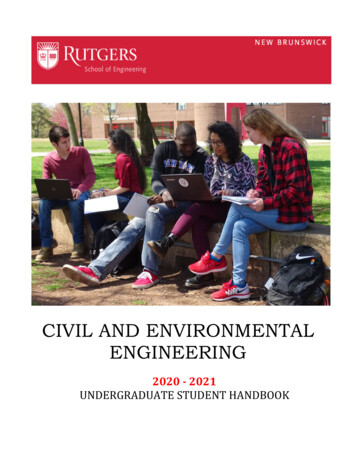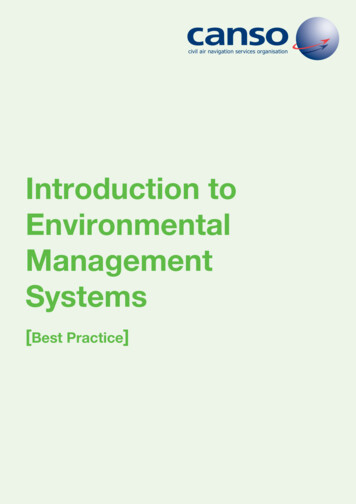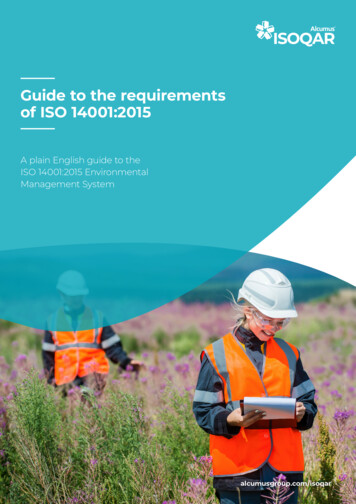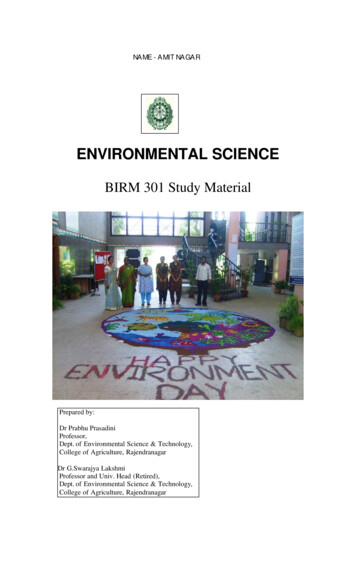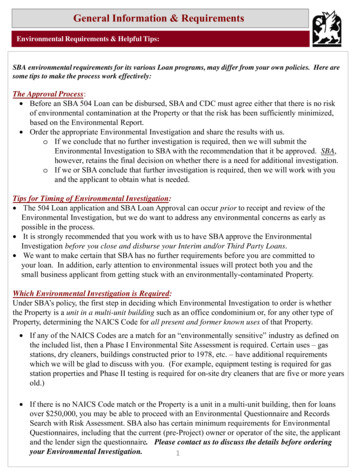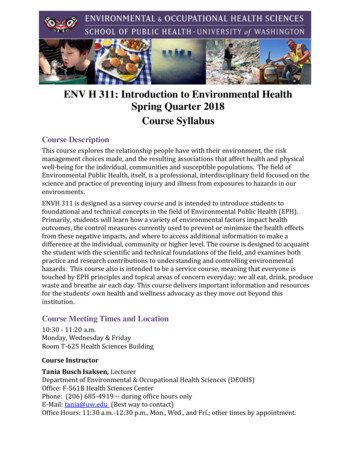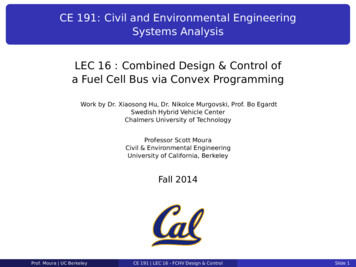
Transcription
CE 191: Civil and Environmental EngineeringSystems AnalysisLEC 16 : Combined Design & Control ofa Fuel Cell Bus via Convex ProgrammingWork by Dr. Xiaosong Hu, Dr. Nikolce Murgovski, Prof. Bo EgardtSwedish Hybrid Vehicle CenterChalmers University of TechnologyProfessor Scott MouraCivil & Environmental EngineeringUniversity of California, BerkeleyFall 2014Prof. Moura UC BerkeleyCE 191 LEC 16 - FCHV Design & ControlSlide 1
Fuel Cell Hybrid VehiclesAC Transit HyRoad Fuel Cell Bus2016 Toyota MiraiProf. Moura UC BerkeleyCE 191 LEC 16 - FCHV Design & ControlSlide 2
How Fuel Cells WorkProf. Moura UC BerkeleyCE 191 LEC 16 - FCHV Design & ControlSlide 3
Fuel Cell Hybrid PowertrainFigure: Fuel cell hybrid powertrain. The vehicle is propelled by an electric machine(EM), which obtains energy from a fuel cell system (FCS), or an electric buffer(battery or supercapacitor). When EM operates as a generator, mechanical energyfrom the wheels is converted to (and stored as) electrical energy in the buffer.Prof. Moura UC BerkeleyCE 191 LEC 16 - FCHV Design & ControlSlide 4
Bus Line Velocity and Road GradeFigure: Model of a bus line, expressed by demanded vehicle velocity and roadaltitude. The initial and final velocities and road altitudes, respectively, are equal,thus conserving kinetic and potential energy of the vehicle.Prof. Moura UC BerkeleyCE 191 LEC 16 - FCHV Design & ControlSlide 5
Research QuestionGiven a fixed bus line (i.e. velocity-road grade profile), optimizeFuel cell & super capacitor component sizesEnergy management strategy for power-splitto minimize operating (hydrogen fuel) component (FC SC) costsUnique FeaturesComponent sizes are static design variables (not time-varying)Energy management strategy is a multi-stage control process(time-varying)Prof. Moura UC BerkeleyCE 191 LEC 16 - FCHV Design & ControlSlide 6
Optimization FrameworkFigure: Optimization framework for simultaneous component sizing and energymanagement of a hybrid city bus. After user inputs are provided, the combinedoperational and components cost are minimized simultaneously, in order to obtainthe optimal power split control and sizes of powertrain components.Prof. Moura UC BerkeleyCE 191 LEC 16 - FCHV Design & ControlSlide 7
Optimization Problemminimizesubject to:Prof. Moura UC BerkeleyOperation Component CostDriving cycle constraints,Energy conversion and balance constraints,Buffer dynamics,Physical limits of components,.(For all time instances along the bus line).CE 191 LEC 16 - FCHV Design & ControlSlide 8
Useful Properties of Convex FunctionThe function f is said to be concave if f is convex.An affine function h(x) qx r is both concave and convex.A quadratic function f (x) qx2 px r with domain f R is convex ifp 0.A quadratic-over-linearfunction f (x, y) x2 /y with 2dom f (x, y) R y 0 is convex.The geometric mean f (x, y) is concave. xy with dom f (x, y) R2 x, y 0A nonnegative weighted sum f functions fi , is a convex function.Pwi fi , with wi 0, of convexA product f (x, y) xy is generally not a convex function.Prof. Moura UC BerkeleyCE 191 LEC 16 - FCHV Design & ControlSlide 9
Longitudinal Vehicle DynamicsNewton’s Second Law, Electric Machine Torque:Tdem (sF , sB , t ) JV m(sF , sB ) m(sF , sB )cr RwrfgR2w2rfg!ω̇M (t) ρair Af cd R3w32rfgg cos α(t ) m(sF , sB )2ωM(t )Rwrfgg sin α(t )Vehicle Mass:m(sF , sB ) m0 sF mF sB mBProf. Moura UC BerkeleyCE 191 LEC 16 - FCHV Design & ControlSlide 10
Electric Motor2PM (TM , t ) a0 (ωM ) a1 (ωM ) · TM (t ) a2 (ωM ) · TM(t)Prof. Moura UC BerkeleyCE 191 LEC 16 - FCHV Design & ControlSlide 11
Fuel CellPFf (PFe , sF ) b0 sF b1 · PFe (t ) b2 ·P2Fe (t )sF0 PFe (t ) sF PFe,maxProf. Moura UC BerkeleyCE 191 LEC 16 - FCHV Design & ControlSlide 12
SupercapacitorEnergy Storage DynamicsĖB (t ) PB (t )Resistive LossesPB,loss (PB (t ), EB (t )) RC P2B (t )2 EB (t )The SC energy level EB (t ) is related to the number of SC cells sF n0 andCV 2 (t )voltage V (t ) according to EB (t ) 2 sB n0 . Both pack energy, cell voltage,and electric current are limited according to0 EB ( t ) rimin2n0C2CVmax2rEB (t )sB PB (t ) imaxs B n02n0CEB (t )sBKEY STEP: Show these produce convex ineq. constraints, using convex fcnpropertiesProf. Moura UC BerkeleyCE 191 LEC 16 - FCHV Design & ControlSlide 13
Objective FunctionMinimize operational cost (consumed hydrogen) and component costs (FCand SC)ZtfPFf (PFe (t ), sF )dt wF sF wB sBJ(TM (t ), PFe (t ), sF , sB , EB (t ), PB (t )) wh0Prof. Moura UC BerkeleyCE 191 LEC 16 - FCHV Design & ControlSlide 14
Objective FunctionMinimize operational cost (consumed hydrogen) and component costs (FCand SC)ZtfPFf (PFe (t ), sF )dt wF sF wB sBJ(TM (t ), PFe (t ), sF , sB , EB (t ), PB (t )) wh0subject to:Longitudinal Vehicle DynamicsElectric Motor Constraint EquationsFuel Cell Constraint EquationsSupercapacity Constraint EquationsProf. Moura UC BerkeleyCE 191 LEC 16 - FCHV Design & ControlSlide 14
Objective FunctionMinimize operational cost (consumed hydrogen) and component costs (FCand SC)ZtfPFf (PFe (t ), sF )dt wF sF wB sBJ(TM (t ), PFe (t ), sF , sB , EB (t ), PB (t )) wh0subject to:Longitudinal Vehicle DynamicsElectric Motor Constraint EquationsFuel Cell Constraint EquationsSupercapacity Constraint EquationsMust show:Obj. Fcn. is convex w.r.t. design variablesInequality Fcns are all convex w.r.t. design variablesEquality Fcns are all affine w.r.t. design variablesProf. Moura UC BerkeleyCE 191 LEC 16 - FCHV Design & ControlSlide 14
Prof. Moura UC BerkeleyCE 191 LEC 16 - FCHV Design & ControlSlide 15
Optimal Results - IProf. Moura UC BerkeleyCE 191 LEC 16 - FCHV Design & ControlSlide 16
Optimal Results - IIProf. Moura UC BerkeleyCE 191 LEC 16 - FCHV Design & ControlSlide 17
SummaryOptimize component sizes (design) and energy management (control)of fuel cell city busEnormously complicated problemTHE SECRET: convex model formulationSolutions in less than 10sec rapid design iterationThis is just the beginning.Prof. Moura UC BerkeleyCE 191 LEC 16 - FCHV Design & ControlSlide 18
Prof. Moura UC BerkeleyCE 191 LEC 16 - FCHV Design & ControlSlide 19
Additional Reading[1]. X. Hu, L. Johannesson, N. Murgovski, B. Egardt. “Longevity-consciousdimensioning and power management of a hybrid energy storagesystem for a fuel cell hybrid electric bus”. Journal of Applied Energy,2014, doi:10.1016/j.apenergy.2014.05.013.[2]. X. Hu, N. Murgovski, L. Johannesson, and B. Egardt, “Comparison ofthree electrochemical energy buffers applied to a hybrid bus powertrainwith simultaneous optimal sizing and energy management,” IEEETransactions on Intelligent Transportation Systems, vol. 15, no. 3, pp.1193Ð1205, June 2014. doi:10.1109/TITS.2013.2294675[3]. B. Egardt, N. Murgovski, M. Pourabdollah, L. Johannesson.“Electromobility studies based on convex optimization: design andcontrol issues regarding vehicle electrification”. IEEE Control SystemsMagazine, vol. 34, no. 2, pp. 32-49, 2014,doi:10.1109/MCS.2013.2295709.Prof. Moura UC BerkeleyCE 191 LEC 16 - FCHV Design & ControlSlide 20
An affine function h(x) qx r is both concave and convex. A quadratic function f(x) qx2 px r with domain f R is convex if p 0. A quadratic-over-linear function f(x;y) x2 y with dom f (x;y) 2R2 jy 0 is convex. The geometric mean f (x;y) p xy with dom f x;y) 2R2 jx;y 0 is concave. A nonnegative weighted sum f P w if i, with w i .


